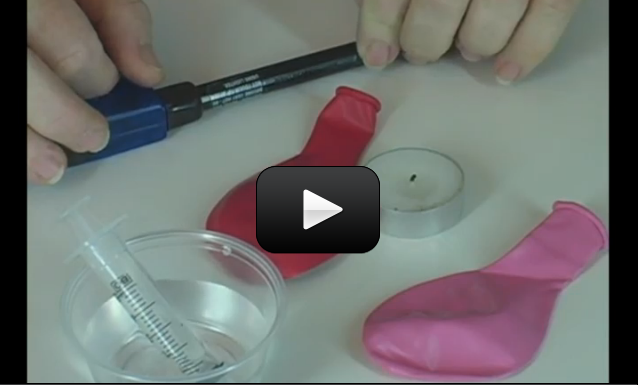If you’ve ever had a shot, you know how cold your arm feels when the nurse swipes it with a pad of alcohol. What happened there? Well, alcohol is a liquid with a fairly low boiling point. In other words, it goes from liquid to gas at a fairly low temperature. The heat from your body is more then enough to make the alcohol evaporate.
As the alcohol went from liquid to gas it sucked heat out of your body. For things to evaporate, they must suck in heat from their surroundings to change state. As the alcohol evaporated you felt cold where the alcohol was. This is because the alcohol was sucking the heat energy out of that part of your body (heat was being transferred by conduction) and causing that part of your body to decrease in temperature.
As things condense (go from gas to liquid state) the opposite happens. Things release heat as they change to a liquid state. The water gas that condenses on your mirror actually increases the temperature of that mirror. This is why steam can be quite dangerous. Not only is it hot to begin with, but if it condenses on your skin it releases even more heat which can give you severe burns. Objects absorb heat when they melt and evaporate/boil. Objects release heat when they freeze and condense.
Do you remember when I said that heat and temperature are two different things? Heat is energy – it is thermal energy. It can be transferred from one object to another by conduction, convection, and radiation. We’re now going to explore heat capacity and specific heat. Here’s what you do:
[am4show have=’p8;p9;p11;p38;p92;p23;p50;p85;p88;’ guest_error=’Guest error message’ user_error=’User error message’ ]
You Need:
- Balloon
- Water
- Matches, candle, and adult help
- Sink
Download Student Worksheet & Exercises
1. Put the balloon under the faucet and fill the balloon with some water.
2. Now blow up the balloon and tie it, leaving the water in the balloon. You should have an inflated balloon with a tablespoon or two of water at the bottom of it.
3. Carefully light the match or candle and hold it under the part of the balloon where there is water.
4. Feel free to hold it there for a couple of seconds. You might want to do this over a sink or outside just in case!
So why didn’t the balloon pop? The water absorbed the heat! The water actually absorbed the heat coming from the match so that the rubber of the balloon couldn’t heat up enough to melt and pop the balloon. Water is very good at absorbing heat without increasing in temperature which is why it is used in car radiators and nuclear power plants. Whenever someone wants to keep something from getting too hot, they will often use water to absorb the heat.
Think of a dry sponge. Now imagine putting that sponge under a slowly running faucet. The sponge would continue to fill with water until it reached a certain point and then water started to drip from it. You could say that the sponge had a water capacity. It could hold so much water before it couldn’t hold any more and the water started dripping out. Heat capacity is similar. Heat capacity is how much heat an object can absorb before it increases in temperature. This is also referred to as specific heat. Specific heat is how much heat energy a mass of a material must absorb before it increases 1°C.
Exercises Answer the questions below:
- What is specific heat?
- The specific amount of heat any object can hold
- The amount of energy required to raise the temperature of an object by 1 degree Celsius.
- The type of heat energy an object emits
- The speed of a compound’s molecules at room temperature
- Name two types of heat energy:
- What type (or types) of heat energy is at work in today’s experiment?
- True or False: Water is poor at absorbing heat energy.
- True
- False
[/am4show]


Conduction is a form of heat transfer, not a type of energy itself. Heat, in a way, doesn’t exist. Nothing has heat. Things can have a temperature. They can have a thermal energy but they can’t have heat. Heat is really the transfer of thermal energy. Or, in other words, the movement of thermal energy from one object to another. Heat can be transferred through conduction, convection or radiation.
For question #3, why is conduction not part of this experiment? Thank you!
It’s more a matter of how much water you have inside of the balloon. Try again?
Hi Aurora! We did this one, but it popped a few seconds later. Does this experiment, matter by size of the balloon, or by water?
Thanks!